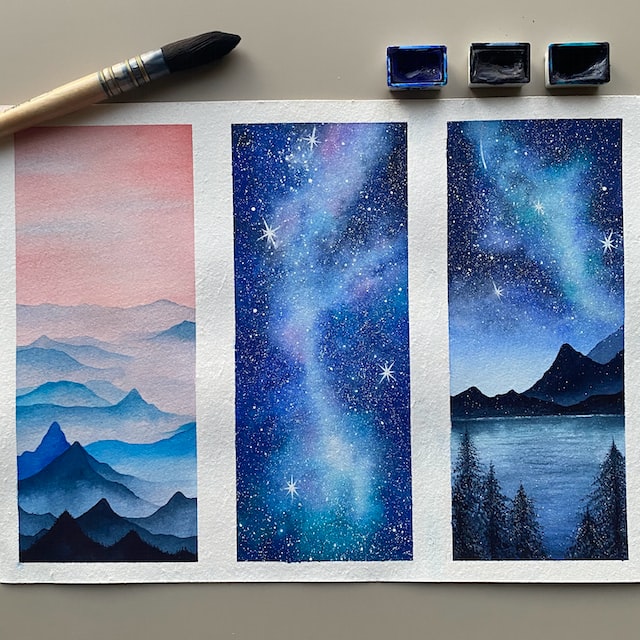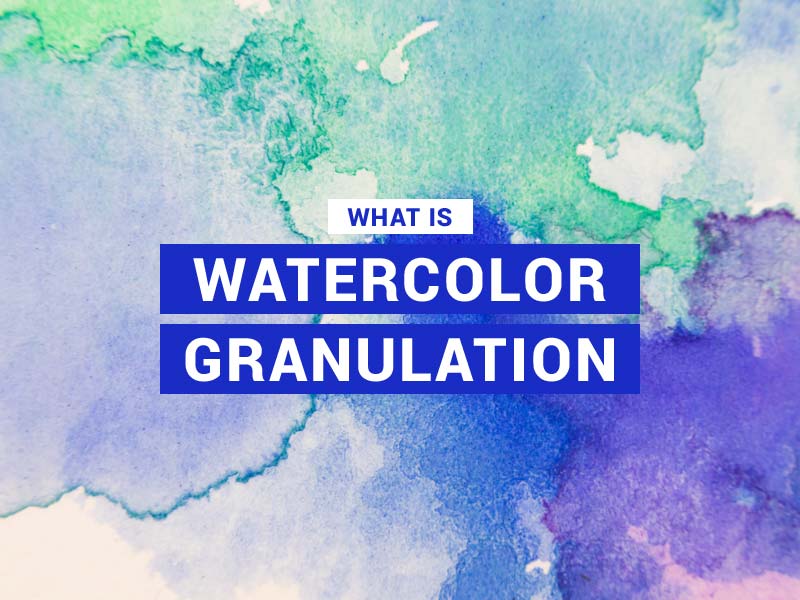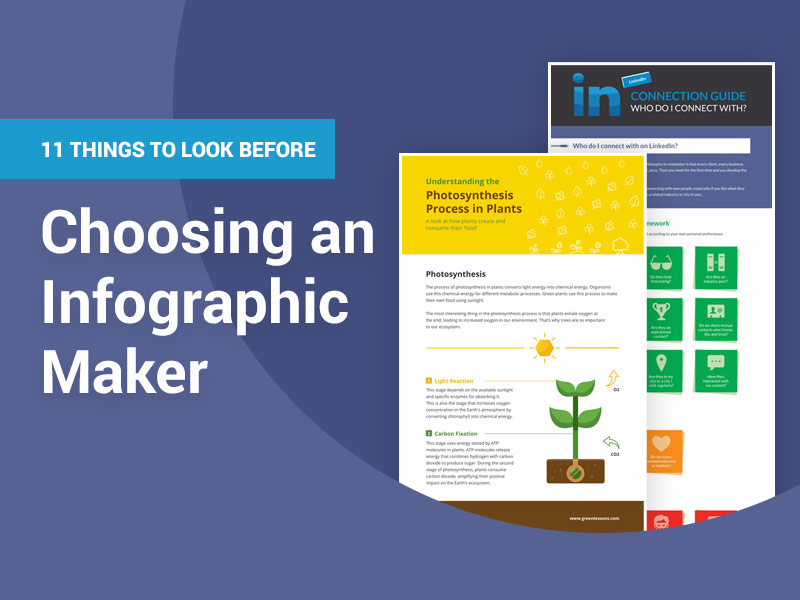If you’re an aspiring artist or simply love to spend your free time drawing and painting, watercolors are amazing tools to explore your creativity and imagination.
Here is how you can use a variety of different types of watercolors to create granulation and make your paintings look lively and extra layered.
What is Granulation?
Watercolor granulation is a particular characteristic of watercolors that makes the layer of paint look mottled and textured.
Essentially, instead of evenly dispersing on paper and staying within the layer of watercolor paint, the pigment particles cluster together and create this textured appearance called watercolor granulation. There are spots where the pigment is darker and more intense, and there are areas of sparse pigment and lighter colors.
Watercolor consists of two elements: pigment, or in other words, the color, and a binder like gum arabic.
Watercolor granulation will occur or fail depending on the pigments that are used in that color. The pigments with smaller, round, and homogenous-shaped particles usually granulate less, and the ones with larger and irregularly shaped particles have a tendency to granulate more.
Which Watercolors Granulate?
As it was already mentioned, the pigment plays a huge role in whether a certain watercolor will granulate and to what extent it will granulate.
However, the pigment is not the only factor. The brand and grade of paint can also determine the presence and level of granulation. The formula of paint is not the same from all manufacturers.
In addition to that, student-grade watercolors, which are usually cheaper, tend to granulate less. This is due to the fact that their paint formula contains less pigment. Since pigments are the most expensive part, the lower quality watercolors contain smaller amounts of them.
Overall, certain colored pigments will have more granulating and sedimentary qualities than others. For instance, blue and purple have an amazing range of highly granulating colors. On the other hand, red and yellow hues that granulate well are really hard to find.
Is There a Way to Predict Whether Watercolor Granulation Will Happen?
The pigments can be categorized into two major groups based on whether they are organic or inorganic. The inorganic ones are usually made with minerals and contain no carbon.
The minerals found in inorganic pigments can be further processed and created into the final pigment product.
Traditional earth shades such as siennas and umbers are primarily made with iron oxide, while colors like cadmium red and cobalt blue are made with metals. These two groups are just some of the examples of inorganic pigments.
Unlike inorganic pigments, organic pigments contain carbon and consist of either plant or animal matter. Organic pigments are made with the help of synthetic organic chemistry.
The majority of the organic pigments that artists use these days are man-made synthetics. They are highly durable and lightfast, even more so than plant and animal-based organic pigments.
Some of the most common examples of synthetic organic pigments are phthalo blue, dioxazine violet, and quinacridone red.
So, which ones granulate more? Generally speaking, watercolors consisting of inorganic pigments usually granulate more than the ones with organic pigments.
![]()
Since organic pigments tend to have regularly shaped and smaller particles, they create an even application of the watercolor.
Meanwhile, inorganic pigments contain larger particles that are often shaped very irregularly. As a result, these particles clump together and leave uneven traces on the paper, and that causes watercolor granulation.
While the nature of the pigment may be a big factor in the level of granulation, it is not the only factor. Every manufacturer uses a different kind of pigment production.
For instance, two companies may use the same inorganic pigment to make watercolors. However, one company uses the more finely ground version of the inorganic pigment, while the other company uses an inorganic pigment that is coarsely ground.
Though these are both examples of inorganic pigments, the difference between them is that the coarsely ground pigment will granulate more than the finely ground pigment.
Altogether, checking whether the watercolor has organic or inorganic pigment is a good starting point in predicting how much granulation you will be able to create.
However, you also have to look into the brand’s website for information on the product and color charts of the watercolors you are purchasing. This way, you will get a better idea of how the paint you’re buying was made and how much granulation you can expect from it.
The Quantity and Quality of Water
Other than watercolors and their pigment, the water you use will also affect the level of watercolor granulation.
A commonly known rule is that the more water you use, the more visible and clear the granulation will be. This applies to both the water on the paper and the water previously mixed in with the paint. So, if you want to increase your watercolor granulation, all you have to do is add more water.
Another, maybe surprising, factor that can determine the amount of granulation is the quality of water. Hard water will cause more visible and pronounced granulation due to the high level of minerals in it. On the other hand, soft or distilled water will cause the paint to granulate less.
Paper Texture
Lastly, another important element is the paper you’re using as your painting canvas. Here’s how paper plays a role in the granulation effect.
When you start using watercolors, you will notice that the paint sort of sinks into the dimples and holes of the paper. As a result, this causes the uneven layer of paint that we recognize as watercolor granulation.
So, if you want your granulation to be more noticeable and pronounced, you should use cold pressed and rough textured paper.
And if you want to have less granulation, then look into purchasing paper with less texture, such as hot pressed paper. Though granulation can still occur even on smooth surfaces, it will be less extreme.

Granulation in Practice
The above-mentioned factors and conditions of watercolor granulation are all just a part of theoretical knowledge. It sets the groundwork for understanding how granulation is created and what causes it to appear at different intensity levels.
Now, it’s time to dive into the art of granulation and how this useful knowledge can be used in practice.
In most cases, watercolorists use granulation either in the form of paints or sprays for:
- Creating varying textures (for example, making an even wash more interesting by giving him a new layer/dimension)
- Landscapes and the details in them (mountainsides, grass, water, forests, and so on)
- Textures from ordinary everyday life (moss, bricks, rough surfaces, etc.)
- Abstract paintings (adding additional texture will make the painting more realistic and will give it interesting stains)
- Grisaille you can use different shades of gray or some other neutral color to create a painting with one color only (by adding granulation, you can give the painting a deeper dimension and make it look layered in color even though you only use one color in several different shades)
- Dark areas contrast the light ones (granulation can help create a smooth transition between dark and light areas on your painting)
- Describing background elements such as trees (everything in the background that we would naturally see as slightly blurred can be given the same effect on the canvas through granulation)
Though granulation is amazing when it comes to landscape and abstract painting, it can be used quite creatively and innovatively in portraits as well.
As it was mentioned above, granulation can help bring out specific textures and create dimension in paintings.
Imagine what wonders that would do when painting human faces. You could accentuate beauty marks, make a certain part of the face stand out, and portray real skin texture in creative ways.
You could also accentuate small details like a person’s shape of lips or nose in a creative way by using watercolors and granulation.
For example, you’d like to accentuate someone’s nose in the painting because they may have cute freckles or an elegant piercing that makes this part of the face draw attention to itself.
You can look up how to draw a nose step by step in order to make a fine line sketch or an outline of the nose and then highlight that part of the face once you start using watercolors.
You can use granulation to accentuate shadows, bring out skin texture, and make the painting look more alive.
You can also use this granulation effect when drawing clothes. Watercolor granulation can help you create different shades and textures for different types of clothing fabrics. Overall, it can be used for many different things, not just for painting landscapes and abstract paintings.
Also read: 11+ Best iPad Pro Apps for Drawing, Sketch & Pencil
Conclusion
To sum up, watercolor granulation occurs when watercolor paints mixed with water spread across the textured paper and causes the layer of paint to appear mottled.
Depending on the type of pigment used in the watercolors, these granulations can either be more visible and extreme, or soft and lighter.
Paper and water can also affect this granulation effect. The more water you use and the more texture your paper has, the more extreme your granulation will be.
Lastly, if you choose to experiment with watercolors and granulation, don’t be afraid to experiment, create different textures, make contrasts between darker and lighter colors, and have fun while creating your own masterpiece on a blank canvas.







